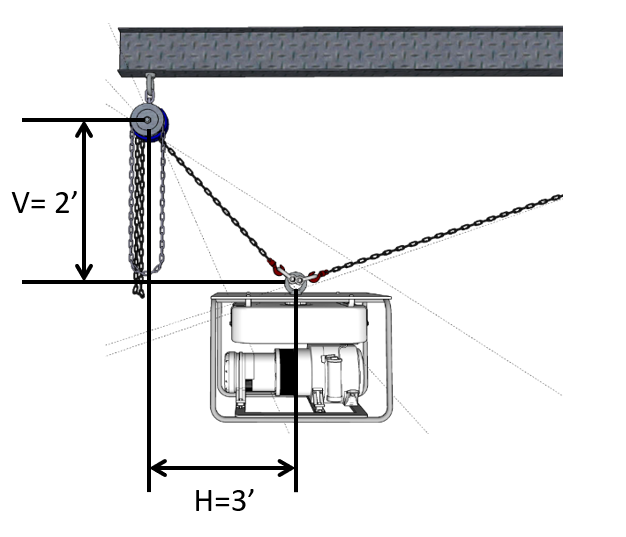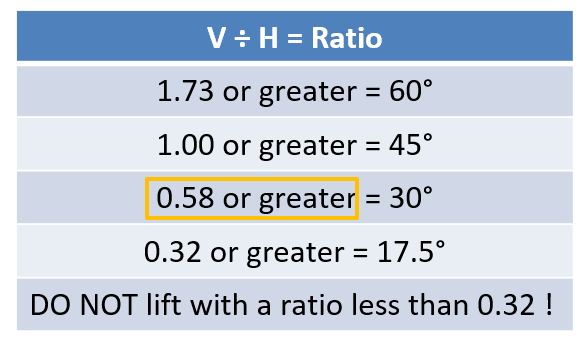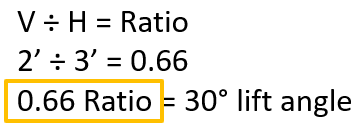There will be times when the sling angles are not known and must be calculated, Under these circumstances, we can use the vertical-to-horizontal ratio table to find an estimated angle corresponding to the ratio. For the example presented on this page, we measure the horizontal and vertical distances between the lift points. Using our measuring tape, we find that the horizontal distance is 3 feet, and the vertical distance is 2 feet. To find the vertical-to-horizontal ratio, we must divide the vertical value by the horizontal value, which in this case is 2 feet, divided by 3 feet. After performing the calculation, we get a ratio of 0.66. Using the table we find that the value of 0.66 is contained in the ratio labeled, 0.58 or greater. This means, that a ratio between 0.58 and 0.99 can use this angle value. Therefore, our sling angle is 30°. Next, we will use this knowledge to determine the lift angles of a rigging setup, to make sure we are within the limits allowable, according to the vertical-to-horizontal ratio table.
To determine the lift angle in the arrangement shown:
- Measure the Horizontal (H) distance between the lift points
- Measure the Vertical (V) distance between the lift points
- Divide the Vertical (V) by the Horizontal (H) to find the Ratio
- Use the answer (Ratio) to find the lift angle in the chart shown.



